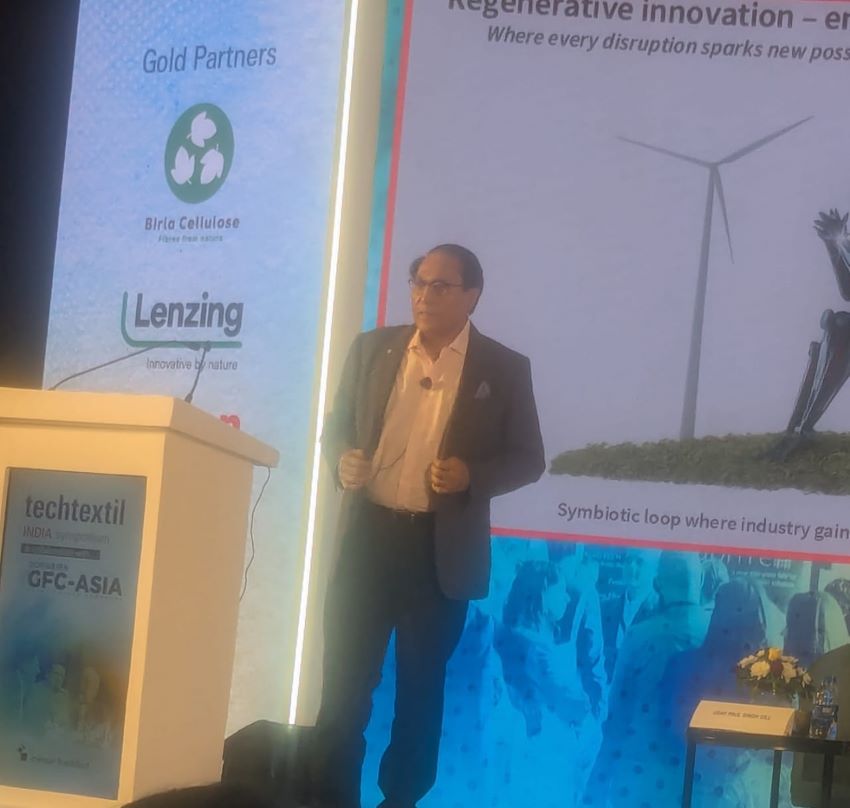"If researches are anywhere to go by, soon we are going to see wool knitwear and bedding that enhance sleep pattern and also aid in relieving chronic skin conditions. As wool can be recycled, research shows wool garments are worn for longer and retained longer than those made of other fibres. In order to sustain properties, wool growers work hard to care for their sheep and land on which they graze, and there is evidence of significant carbon sequestration in the trees and shrubs on sheep farms, which mitigates the effects of greenhouse gases."

If researches are anywhere to go by, soon we are going to see wool knitwear and bedding that enhance sleep pattern and also aid in relieving chronic skin conditions. As wool can be recycled, research shows wool garments are worn for longer and retained longer than those made of other fibres. In order to sustain properties, wool growers work hard to care for their sheep and land on which they graze, and there is evidence of significant carbon sequestration in the trees and shrubs on sheep farms, which mitigates the effects of greenhouse gases. Holistic land practitioners will also tell you how livestock like sheep promote biodiversity and prevent desertification.

But the recent Pulse Report offers a completely different picture. The report ‘scored’ the industry on its environmental and social performance. The overall score received by the industry was 32 out of 100. The report calls for a replacement of ‘conventional cotton’ with polyester. Other suggestions include persuading consumers that polyester is as appealing as cotton, it should develop more man-made fibres, and continue to enhance polyester.
IWTO viewpoint
According to PCI Fibres, anyone in the fibre business has to be aware that polyester producers are constantly looking at other fibres and their markets to determine if polyester can take further market share.
Owing to certain disputed conclusion, the report has been a matter of debate. Geoff Kingwill, Chair, Sustainable Practices Working Group of the International Wool Textile Organisation (IWTO), highlights the most serious problem with the Pulse Report is it presents a ranking of fibre types without required data and analysis. There are clear rules about how to make comparisons of fibre products, particularly to the public. This problem is compounded by failure to make clear that the data the ranking relies upon is based in part on preliminary data. In addition, the ranking is based on just one stage – the first of several stages – of the life cycle of the fibre.
The Sustainable Apparel Coalition (SAC), which supplied the data for the report, is aware that overall impact ratings cannot be inferred from this one portion of data. It is particularly erroneous because while recycled polyester is included in the data used, recycled wool has yet to be incorporated, Kingwill added.
Need additional data to back report
Kingwill points out, the report is based on SAC’s supplied data through Higg Index. But this index itself is a work in progress, which makes the authenticity of data under spotlight. If there is any other tool that can offer authentic data is IWTO, which collects data through research projects and can support development of the Footprint Tool for wool and across fibres. Having said that the data and methods are still under development.
There are stringent rules about comparing fibre types, which are governed by the ISO. The ISO standard – ISO 14040 to be exact – requires that public comparisons be based on a full life cycle assessment. Without including all impact categories, the picture created is incomplete. Such rankings have the potential to mislead consumers and risk a loss of faith in the industry and data provider. Dalena White, IWTO’s Secretary General, said that a loss of credibility like that would be a shame. SAC and its members have worked hard to develop an objective tool that can be used to make positive change. IWTO was not consulted for the Pulse Report, which is disappointing because wool is a meaningful part of the fashion apparel industry.












